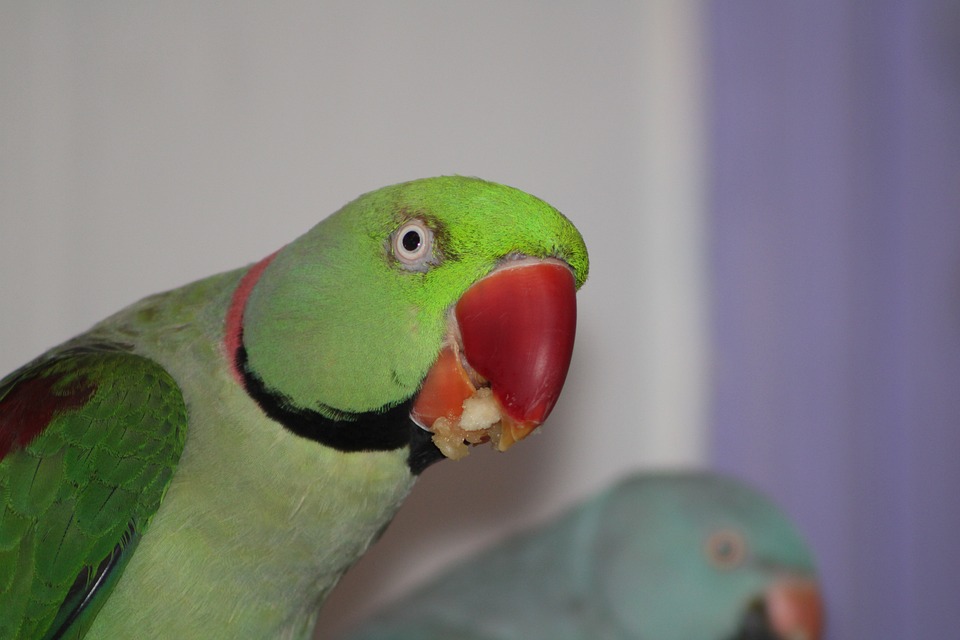Parrots are highly intelligent and social creatures that require proper care and attention to thrive. Just like humans, they can experience fear and anxiety, which can have a negative impact on their overall well-being. As a responsible parrot owner, it is crucial to be able to recognize the signs of fear or anxiety in your feathered companion and take steps to provide reassurance and support. In this article, we will explore common indicators of fear or anxiety in parrots and offer practical tips to help ease their distress. Additionally, we will answer some frequently asked questions related to parrot behavior.
Recognizing Signs of Fear or Anxiety in Your Parrot
Parrots may express fear or anxiety through a variety of behavioral and physical cues. It is important to be observant and attentive to changes in your parrot’s demeanor. Here are some common signs that might indicate your parrot is experiencing fear or anxiety:
1. Feather Plucking or Self-Mutilation: Parrots may resort to excessive preening, feather plucking, or even self-mutilation as a response to stress or anxiety. If you notice your parrot engaging in these behaviors, it is crucial to identify and address the underlying cause.
2. Aggressive Behavior: Fear or anxiety can trigger aggressive behaviors in parrots. This may include biting, lunging, screaming, or displaying territorial behavior. It is important to approach your parrot with caution when they exhibit such behaviors and seek professional advice if needed.
3. Vocalization Changes: Parrots communicate through various vocalizations. If your parrot’s vocalizations change abruptly or become excessive, it may indicate they are experiencing distress or anxiety. Pay attention to any unusual or incessant vocalizations and try to identify the trigger.
4. Body Language: Parrots use body language to express their emotions. Some signs of fear or anxiety include crouching, fluffing up feathers, trembling, rapid breathing, or tail wagging. Observe your parrot’s body language closely to understand their emotional state.
5. Avoidance or Hiding: Parrots may retreat to a hiding spot, such as a corner of their cage, when they feel fearful or anxious. They might also avoid interaction or refuse to step up onto your hand. If your parrot consistently exhibits avoidance behaviors, it is crucial to address their emotional well-being.
Providing Reassurance and Support
Once you’ve recognized signs of fear or anxiety in your parrot, it’s important to provide reassurance and support to help them overcome their distress. Here are some strategies you can implement:
1. Create a Safe Environment: Ensure your parrot’s living space is free from potential stressors, such as loud noises, sudden movements, or intimidating objects. Provide hiding spots and perches at different heights, allowing your parrot to feel secure in their surroundings.
2. Establish a Routine: Parrots thrive on routine and predictability. Establish a consistent daily routine for feeding, playtime, and social interaction. This will help alleviate anxiety by providing a sense of stability and security.
3. Positive Reinforcement: Use positive reinforcement techniques to reward desirable behaviors exhibited by your parrot. This can include offering treats, praise, or favorite toys. By reinforcing positive behavior, you can help build your parrot’s confidence and trust.
4. Socialization and Enrichment: Parrots are social creatures and benefit from regular interaction with their human caregivers and other parrots. Ensure your parrot receives ample socialization and mental stimulation through playtime, training sessions, and toys that encourage foraging and exploration.
5. Seek Professional Help: If your parrot’s fear or anxiety persists or worsens despite your efforts, it may be necessary to consult a professional avian veterinarian or a qualified avian behaviorist. They can provide expert guidance and develop a tailored plan to address your parrot’s specific needs.
Frequently Asked Questions about Parrot Behavior
Q: Can parrots develop separation anxiety?
A: Yes, parrots are highly social animals and can develop separation anxiety when they feel isolated or disconnected from their human caregivers. Gradual training and providing engaging toys can help alleviate separation anxiety.
Q: How can I help my parrot overcome fear of certain objects or situations?
A: Gradual desensitization and counterconditioning techniques can be effective in helping parrots overcome their fear. Start by introducing the feared object or situation from a distance and gradually decrease the distance over time while offering positive reinforcement and rewards.
Q: Are there specific calming techniques I can use to help my anxious parrot?
A: Yes, there are various calming techniques you can try, such as providing a cozy and secure sleeping area, playing soothing music or natural sounds, using herbal supplements or diffusing calming essential oils (consult with a veterinarian before using any products).
Q: Can changes in my parrot’s diet affect their behavior?
A: Yes, nutrition plays a vital role in a parrot’s overall well-being, including their behavior. Ensure you provide a balanced and species-appropriate diet to support their physical and emotional health.
Q: Can parrots be trained to manage their fear and anxiety?
A: Yes, parrots are intelligent and trainable. Positive reinforcement training techniques can be used to help parrots manage their fear and anxiety by gradually exposing them to the fearful stimuli and rewarding calm behavior.
Remember, each parrot is unique, and their responses to fear or anxiety may vary. Patience, empathy, and understanding are key when addressing their emotional well-being. By recognizing the signs of fear or anxiety and providing reassurance and support, you can help your parrot lead a happier and more fulfilling life.









